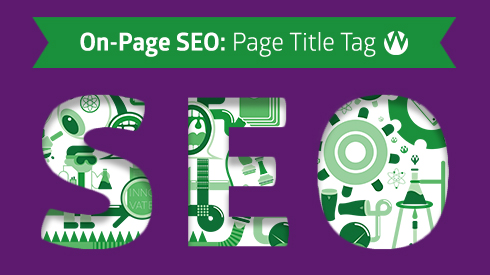By Sean Markey on 28 Oct 2015

Search engine optimisation has continuously evolved over the past few years as webmasters and advertisers alike scramble to keep in line with Big G’s (that’s Google, not Grimlock) ever-evolving guidelines.
As search marketers, it’s our aim to not only adhere to best SEO practice principles as a matter of digital marketing ethics, but also to try and help keep our clients’ websites one step ahead of the competition.
Here at Wolfgang Digital, we see on-page optimisation as the very cornerstone of a well-optimised website and the ‘first port of call’ for any and all SEO campaigns.
When a well-optimised page has been formatted and published, it makes the art of driving and increasing targeted traffic a whole lot easier, so following these simple but effective steps towards on-page optimisation will ensure your site is in tip-top condition for future-proof SEO and may well save you a whole lot of heartache by avoiding basic technical issues in future.
As itemising and elaborating upon the minutia of every single on-page SEO issue would make for a lengthy and unwieldy blog post, we’re going to produce an ongoing series, with each entry focusing specifically on one particular aspect of the overall on-page optimisation process – giving it the time and detail it (and indeed you your websites) deserve.
Since this is the first of our on-page optimisation guides, we’ll start at the beginning (no point in jumping in at the half way point) and introduce one of the most important on-page SEO considerations of all, the Page Title Tag.
Page Title Tag
The Page Title Tag (it looks like <title>This is the Title of My Page</title> in HTML code) is widely considered to be the single most important on-page element in terms of SEO as search engine crawlers place a lot of weight on the use of a focused keyword or keyphrase (i.e. the word or phrase which you would primarily like your page to rank well for) in a Page Title Tag when it comes to deciding which pages rank well in SERPs (Search Engine Results Pages).
It is, therefore, extremely important that the Page Title Tag is properly optimised. The following should be done in relation to a web page’s Page Title Tag:
Page Title Tag Keyword Positioning
A page’s main targeted keyword should be inserted into the Page Title Tag as this will allow search engine crawlers to identify the page as being closely associated with the keyword in question. Page Title Tags are also weighted in terms of keyword positioning, meaning that pages with the focused keyword near the beginning of the Page Title Tag tend to receive a ranking bonus over those with the same keyword appearing later in the Title.
It’s important to strike a balance between having your page’s focused keyword as close to the beginning of the Page Title Tag as possible while making sure that the title itself makes sense for web users to read and deduce what the page is about.
After all, there isn’t much point in having your pages rank highly in Google’s SERPs only for potential visitors to not know what the page is actually about and not bother clicking on it!
Optimum Page Title Tag Length
Generally speaking, when dealing with Page Title Tags, you have a maximum width of 512 pixels to fit your Page Title tag into. In terms of character length, this means that your Page Title Tags should come in between 50 to 60 characters.
It’s generally considered best practice to keep Page Title Tags below the 55 character mark in order to avoid truncation (where the search engine cuts off part of your page title, leaving behind a messy looking trail off…)
There is no universally accepted minimum length for Page Title Tags as far as SEO is concerned, although brevity is often considered favourable. We generally recommend using a minimum of 30 characters, or 200 pixels, to make sufficient use of the SERP real estate available to your page, but there is no empirical evidence to suggest falling short of this threshold is damaging in any way.
Ultimately, it’s up to you as a webmaster / content curator to decide how many characters you need to include in your Page Title Tag in order for it to appear enticing to potential site visitors.
A clear and concise description without too much ‘filler’ is highly recommended.
We recommend running your site through an advanced site crawler such as Screaming Frog, or indeed a more simple solution like snippet optimiser which illustrates exactly how your chosen fields will appear in the SERPS prior to publication; if you like what you see, it’s safe to hit ‘Publish’ on that new page or blogpost!

It’s also worth noting that, on some occasions, search engines will replace your preferred Page Title Tag with alternative text generated from the page’s copy if their crawlers deem it to be more relevant to what the page is about.
Robots don’t always make the most logical choices however, leading to odd-looking SERP listings at times, but optimising to ensure page content/title relevance is a sure-fire way of minimising this risk.
With that in mind, it is always beneficial to accurately describe what your page is about in your Page Title Tag, maximising relevance for both users and search engines.


.png)
.png)







_2025.png)

